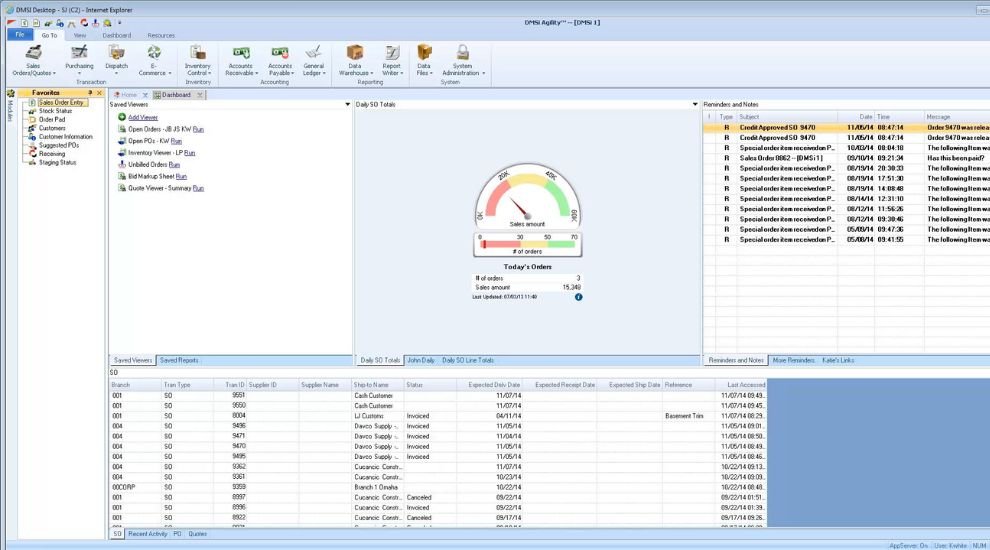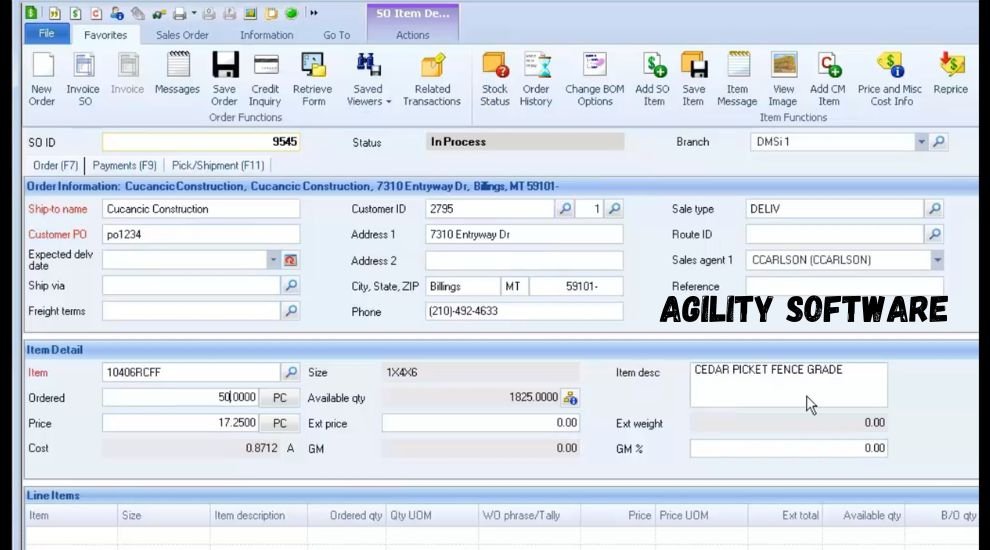Agility software is a revolutionary software designed to help businesses improve productivity, collaboration, and workflow across various sectors. Used across numerous fields to facilitate project management smoothly and flexibly across projects of various scales – its main aim is providing organizations with tools necessary for rapidly adapting to change quickly and efficiently – it benefits small startups as much as large enterprises alike in helping teams collaborate better and streamline daily operations more smoothly.
How Agility Software Improves Business Efficiency
Agility software offers businesses significant efficiencies by providing real-time collaboration tools, automation features, and data-driven insights that streamline operations and create tangible advantages for management efficiency. Companies using agility can manage tasks more quickly without incurring unnecessary delays; moreover, it integrates seamlessly with multiple business apps for smooth communication among various teams, as well as transparency of operations, which makes tracking project progress simpler for managers as they quickly identify bottlenecks before becoming major issues.
Key Features of Agility Software
Agility software offers businesses many features to assist them with improving their workflows, such as task automation, workflow management, real-time analytics, and seamless integration with other tools. Furthermore, agility provides cloud access that allows employees to work remotely while staying connected; all this ensures projects are completed on time and under budget – an advantage in today’s highly competitive business world!
Why Businesses Need Agility Software

Businesses operating today operate in an ever-evolving environment, making agility software an indispensable asset to long-term growth. Without it, companies may struggle to keep up with industry trends and customer demands. Without agility, software businesses may struggle to adapt quickly to changes while keeping productivity high. Employing agility software allows organizations to quickly adapt to challenges while maintaining productivity – providing companies with increased operational cost savings, efficiency improvements, and team collaboration benefits while remaining profitable throughout their operations.
The Role of Agility Software in Project Management
Agility software plays a pivotal role in project management by helping teams collaborate more efficiently and meet deadlines on time by offering a structured framework for planning, executing, and monitoring projects using agility software. Teams can use it to break tasks down into smaller, manageable units to ensure each phase of their projects is finished on schedule, and by taking advantage of built-in reporting tools, managers can track progress while making data-driven decisions to increase overall productivity.
How Agility Software Enhances Team Collaboration
Effective collaboration is central to business success, and agility software makes team communication simpler by offering real-time chat, document sharing, and task-tracking features to facilitate teamwork. Employees can access project details, update statuses, or receive alerts of pending deadlines more quickly using agile software; teams can avoid miscommunication more efficiently while working toward common business goals more successfully using this innovative solution.
Agility Software and Automation: A Powerful Combination
Automation is among the most important benefits of software for agility, helping businesses save time and funds to concentrate on more important tasks. Agility software enables teams to set automated workflows that decrease manual effort while increasing accuracy and decreasing operational risk – an advantage over manually managed processes, which require human involvement to run efficiently and reliably.
The Benefits of Using Agility Software

Agility offers businesses many benefits by adopting it, including increased efficiency, enhanced team collaboration, and superior project management. Businesses using agility also experience quicker decision-making processes, decreased operational costs, and greater productivity gains. Agility helps organizations keep their competitive edge by swiftly responding to the changing needs of their respective industries and optimizing workflow processes. Seamless integration with other tools for business also makes the software for agility indispensable to every business.
| Benefit | Description |
| Improved Efficiency | Streamlines workflows and reduces manual tasks. |
| Better Collaboration | Enhances team communication with real-time updates. |
| Enhanced Project Management | Provides structured frameworks for planning and execution. |
| Faster Decision-Making | Offers real-time analytics and reporting. |
| Reduced Operational Costs | Automates tasks to save time and resources. |
| Increased Productivity | Ensures smoother operations and timely project completion. |
| Competitive Advantage | Helps businesses adapt quickly to industry changes. |
| Integration with Other Tools | Connects seamlessly with existing business software. |
Drawbacks of Agility Software
While agility offers numerous advantages for businesses, there may also be drawbacks they should keep in mind before implementation, such as higher costs, complexity, and potential resistance from employees.
- High Costs: Small businesses requiring agility solutions often face significant upfront investments for these solutions, particularly subscription fees, customization expenses, and training expenses, which often make these expensive propositions for some organizations.
- Implementation Issues: Adopting agility software often necessitates significant modifications to workflow and business operations, leaving companies struggling with implementation due to either lacking technical knowledge or being inadequately supported by software providers.
- Employee Resistance: Employees may resist change if they are used to traditional project management approaches; training and change management strategies are therefore vitally important to ensure smooth adoption and optimal use of agility software.
- Over-Reliance on Technology: Businesses that depend too heavily on agility may experience problems when technical difficulties arise, including downtime, bugs, and compatibility issues with other tools, which disrupt operations and reduce productivity.
Although agile software presents some unique challenges to businesses, many find the benefits far outweigh its drawbacks. Through planning, employee training, and choosing an adequate software provider, companies can mitigate many issues associated with agility deployment.
Choosing the Right Agility Software for Your Business
Selecting agility requires careful consideration of several factors, including business size, industry needs, and budget. Companies should look for software with features such as task management, automation, and analytics; ease of use, scalability, and customer support should also be key considerations before investing. Businesses should conduct extensive research before purchasing agility in order to find their optimal solution.
Things You Have To: metro-2-Software
Future Trends in Agility Software

Artificial Intelligence (AI) Machine learning and automation continue to take huge strides and provide us with AI-powered agility tools capable of predicting workflow bottlenecks and recommending solutions. Cloud solutions will grow and allow businesses to access reliable operations anywhere. Enhanced data analytics will help businesses make better decisions based on the latest information obtained through live analytics capabilities. Businesses that invest now are better in the future of a constantly evolving technological environment.
Conclusion
Software that can help with agility is essential to companies who want to increase productivity, collaborate, and manage projects. Firms that use software to improve agility discover that they improve productivity by simplifying operations while also being ahead of competitors. While agile software may present some drawbacks initially, proper planning and training can help companies address them successfully. As technology progresses further, agile software will only become even more potent, becoming essential tools for businesses of any size, from startups to large enterprises alike! Investing in agility could drive long-term success and growth!
Read You Have To Know: Maisto-Tech-27hz-Remote-Control-Rc-Car-Screw-Type
Frequently Asked Questions (FAQs)
Q: What’s the purpose of the purpose of agility software?
A: Agility software is used to improve workflow, collaboration, and project management, helping businesses adapt quickly to changes.
Q: Is agility software suitable for small businesses?
A: Yes, many agility software solutions offer scalable options that fit the needs of small businesses and startups.
Q: Does agility software require training?
A: Some agility software solutions have a learning curve, so training may be needed to maximize their benefits.
Q: Can agility software integrate with other business tools?
A: Yes, most agility software platforms support integration with various business applications like CRM, ERP, and communication tools.
Q: How does agility software enhance productivity?
A: By automating tasks, improving communication, and providing real-time insights, agility software helps teams work more efficiently.
